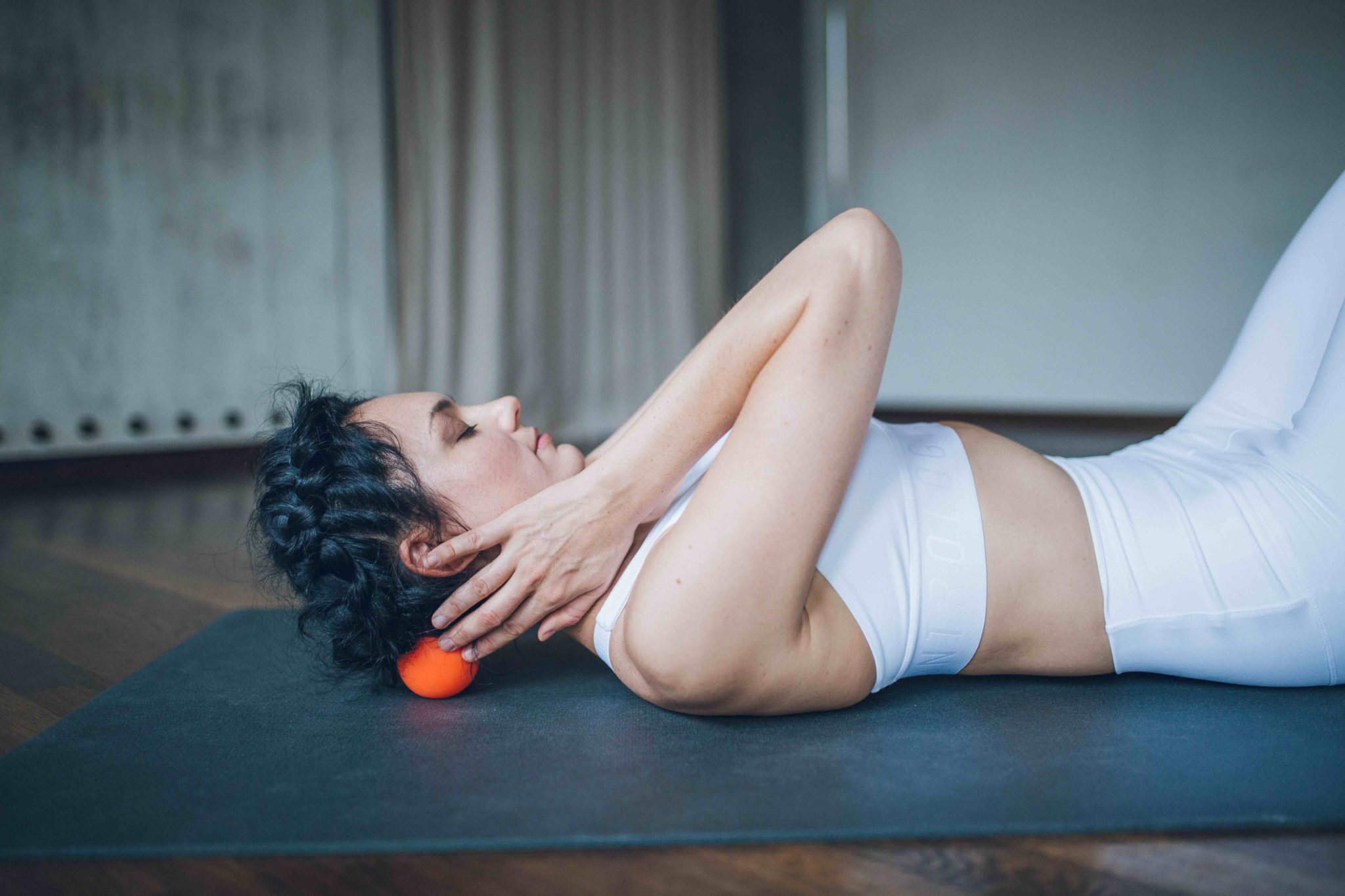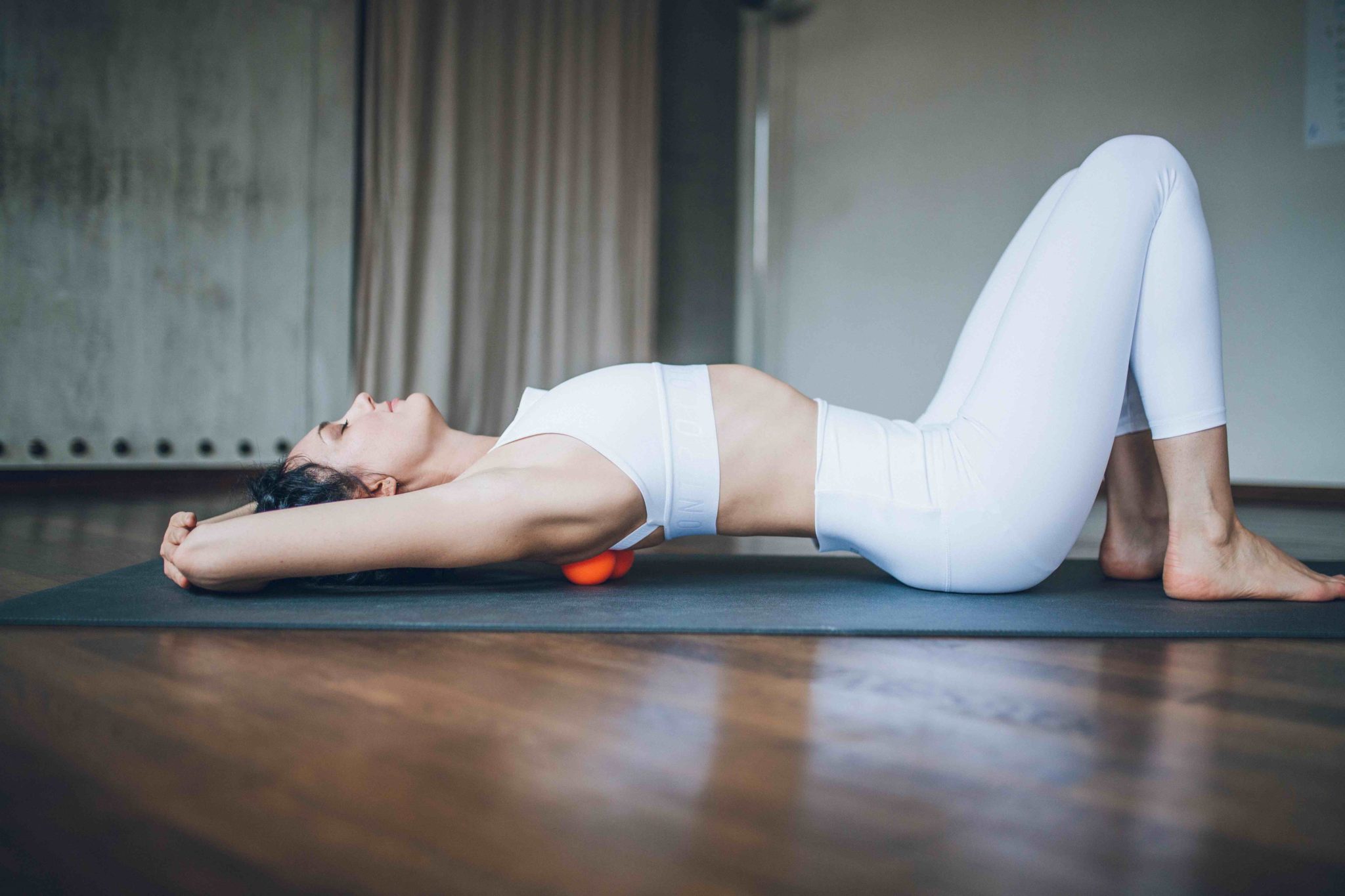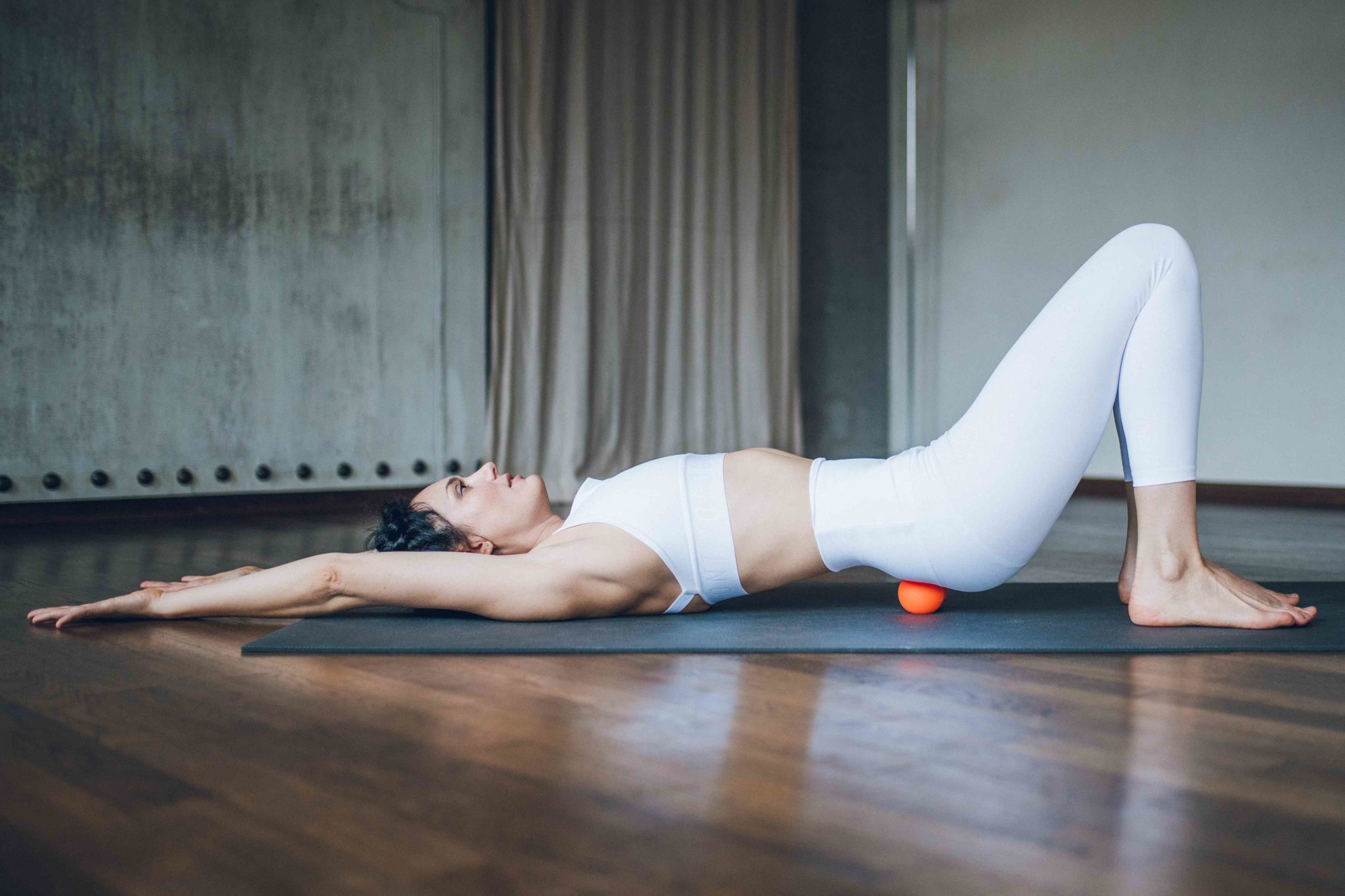How to be your own massage therapist: simple myofascial release practices for a healthy spine
Over the years practicing yoga, I have discovered for myself a few bodywork approaches that seem to complement yoga really well.
One of them is myofascial release technique - MRT.
But first things first: what IS fascia?
To understand it, imagine a very strong spider web. Between the gaps in the threads instead of air, is gelly-like liquid. When you pull on one end of this spiderweb, the whole structure moves. Can you visualise it? If yes, you are very close to understanding fascia and the way it works. This three-dimensional fascia is present throughout our body, underlying the skin, surrounding our muscles, nerves, organs, blood vessels and bones. Research suggests that fascia even surrounds our cells. All these structural elements are held together and in place by fascia. It has a myriad of qualities, however some of the most important ones are flexibility and adaptability.
What can go wrong with fascia, and what to do about it?
When one spot in the fascia gets injured or tight, it has an effect on the whole fascia structure. Like a ripple, it moves to a seemingly unrelated area. So, for example, an issue that originates in the foot or toe can have an impact on lower back health.
When fascia is traumatized, it hardens and tightens. This in turn can lead to formation of fascia trigger points, and those can be painful.
When the body is dealing with pain, it creates a protection response. It is not a bad thing in itself, however if the pain is ongoing, the protection response will over time limit the blood and oxygen flow to the area, increasing the pain and the toxin buildup in the traumatised region. Signals of pain are delivered to the spinal cord. This makes the muscles around the injured area contract so that the surrounding muscles are supported and protected.
When this process is allowed to continue, this becomes a vicious circle as blood flow to the injured area with contracted muscles around it, is still limited. More pain signals are sent to the spine, and the protection buffer of constricted muscles around the painful spot, continues to grow.
Myofascial release techniques (MRT) and self myofascial release (SMR) are designed to intervene with this vicious circle, even/smooth out hardened muscular knots, and help fascia return to its natural state that is healthy, flexible, adaptable and fluid.
In a nutshell: MRT and SMR are great ways to release the muscle and the connective tissue where they get tight and to work on the trigger points.
As an additional and very important benefit, MRT helps the body to distribute hydration all the way to the deepest tissues. Even if you do drink enough water, often the hydration doesn't get distributed through the connective tissue evenly. When connective tissue (which fascia is a part of) is chronically dehydrated, the structure of it changes and it becomes less smooth and loses its natural lubrication. This has a negative effect on the muscles that are supposed to be able to glide along the fascia with ease.
Working on fascia is also beneficial for changing some of the postural habits of the body that are not serving you. By manipulating the deepest tissues of the body, you can start to change those postural patterns so that along with a yoga (asana) practice, you can create a foundation for a really balanced body, complete with healthy connective tissue and an aligned, healthy physical "architecture".
Below are a few simple practices that you can use to start your journey of exploring MRT and SMR.
What you'll need
For these practices you'll need one medium hardness double myofascial release ball that you might already have from one of my past retreats, or that you can order here.
Alternatively, you can use 2 tennis balls in a sock - this is not as effective as the myofascial release balls, but will do as a temporary solution.
1. Myofascial release for the neck

Benefits
This technique helps to relieve pressure at the top of the neck, lengthening the muscles and connective tissue where they tend to get tight as a result of long sitting in front of the computer, commuting or driving. This practice also helps to reduce the migraines and headaches that are related to the tension in the upper neck and occipital ridge.
How
Lie on your back and place the double myofascial release balls under the top of your neck, at the border with the occipital ridge of your skull.
Hold on to the myofascial release balls so that they stay in place, nod your head and try to locate the tight spots. Once you have found them, draw the chin towards the chest to enable the myofascial release balls to work deeper on the muscle and fascia of that region. Then slightly tilt your head from side to side, moving the weight of your head from one ball to the other.
2. Myofascial release for the thoracic spine

Benefits
MRT for thoracic spine (chest region of your back) is a great way to access the area of your spine that frequently gets tight from the lack of movement. Another reason to use MRT in the thoracic region is to offer your rhomboid muscles (that you use a lot in yoga) a much needed deep tissue massage. Lastly, MRT in this part of your body helps you mobilise the shoulders and shoulder blades.
How
Lie on your back and slide the double myofascial release balls under the back of your heart. Adjust the right and the left side of the myofascial release balls so that they are on the same level. Take the arms over your head and place your hands on the opposite elbows. Roll a few centimetres up and down your spine and try to relax the area you're working with instead of tightening up.
3. Myofascial release for the sacrum

Benefits
This SMR exercise helps to release tightness and tension in sacrum and lower back. It is also a balancing practice for the muscles and fascia supporting your SI joint (sacroiliac joint).
How
Lying down on your back, place the myofascial release balls under your sacrum. Move up and down, trying to locate the tighter spots around the SI area. Once you've found a sweet spot, stay there for a few minutes.
If it becomes easy, lift your feet off the mat and pull the knees towards the chest, increasing the pressure on the points where the myofascial release balls are in contact with your body.
So, now you have a few simple and easy-to-use tools that you can use at home or while traveling for a healthy, happy, tension-free spine.
Would you like to learn more about fascia, MRT and how they can be used in your yoga practice?
Let me know and I'll create new resources and videos for you!
ps. If you are seriously nerdy like me, click here to read one interesting study I found on this topic.

